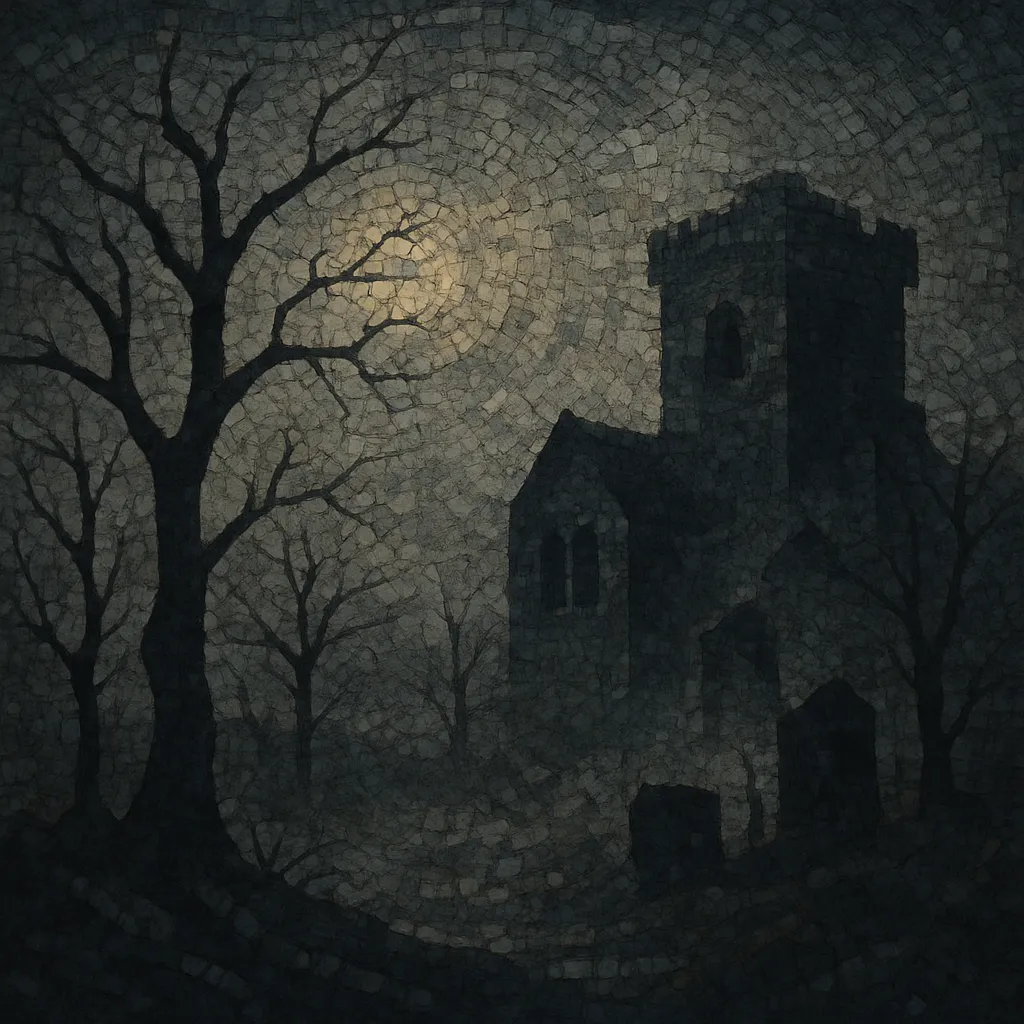Dark ambient is a subgenre of ambient music that emphasizes ominous, brooding atmospheres, sub-bass rumbles, and textural noise over melody and rhythm. It often evokes feelings of isolation, cosmic dread, sanctified ritual, or post-industrial decay, prioritizing mood and immersion above traditional song structure.
Typical sound design includes layered drones, heavily processed field recordings, metallic resonances, dissonant tone clusters, and cavernous reverbs. The music tends to evolve slowly over long durations, with subtle timbral shifts and spectral motion substituting for harmonic progression or beat-driven momentum.
Dark ambient grew from the convergence of ambient, industrial, and experimental practices. Early ambient (e.g., atmospheric, beatless works) provided the static, immersive canvas, while industrial and noise scenes contributed harsher timbres, found sound, and thematic darkness. Artists in the UK and continental Europe began shaping a colder, more foreboding strain of ambient using drones, mechanical hums, and processed environmental recordings.
In the 1990s, the aesthetic coalesced around dedicated labels and scenes—particularly in Europe—where terms like “dark ambient” circulated in zines, catalogs, and liner notes. Swedish and German imprints and artists emphasized ritualistic overtones, ecclesiastical acoustics, and cinematic sound design. The style’s vocabulary—sub-bass drones, monastic/ritual textures, metallic scrapes, and vast reverbs—became widely recognized.
Affordable DAWs, convolution reverbs, and portable recorders fueled an explosion of independent releases. Netlabels and later streaming platforms made long-form albums and concept works more accessible. A more cinematic approach flourished: space, ruin, and mythic/occult themes informed cover art and composition. Cross-pollination with black metal (interludes and full releases), drone metal, and experimental film/game scoring broadened the audience.
Dark ambient today encompasses ritual ambient, black ambient, and post-industrial hybrids. Collaborative projects, sample libraries, and immersive audio formats (e.g., ambisonics/headphone binaural) continue to refine spatial aesthetics. The genre’s techniques underpin sound design for horror, sci-fi, installations, and narrative podcasts, while independent labels curate cohesive, story-driven releases.


